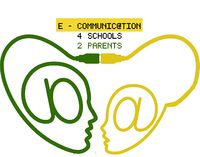E-communIC@Tion 4 schools 2 parents: Difference between revisions
No edit summary |
No edit summary |
||
| (5 intermediate revisions by one other user not shown) | |||
| Line 2: | Line 2: | ||
|image=ECom4s2p_logo_1.JPG | |image=ECom4s2p_logo_1.JPG | ||
|project_title=E-communIC@Tion 4 schools 2 parents | |project_title=E-communIC@Tion 4 schools 2 parents | ||
|acronym= eCom4s2p | |acronym= [[eCom4s2p]] | ||
|donor= European Union (Leonardo LLP project) | |donor= European Union (Leonardo LLP project) | ||
|lead_partner=[[Katholieke Hogeschool Limburg dept SAW]] | |lead_partner=[[Katholieke Hogeschool Limburg dept SAW]] | ||
| Line 13: | Line 13: | ||
|cost_fwc=€10.000 | |cost_fwc=€10.000 | ||
|grant_fwc=€10.000 | |grant_fwc=€10.000 | ||
| | |start_day=01 | ||
|start_month=08 | |||
|start_year=2010 | |||
|end_day=31 | |||
|end_month=07 | |||
|end_year=2012 | |||
|description= | |description= | ||
|main_page= | |main_page= [[eCom4s2p]] | ||
|website=http://ecom4s2p.mixxt.com | |website=http://ecom4s2p.mixxt.com | ||
|about= | |about= | ||
| Line 39: | Line 45: | ||
Step 6: Set up of local training for teachers and social educators to learn them how e-communication works.<br> | Step 6: Set up of local training for teachers and social educators to learn them how e-communication works.<br> | ||
|title_footer=Expected Results | |title_footer=Expected Results | ||
|content_footer= | |||
* Preparation first meeting: presentation partner organisation and associated partners, the art of vocational education in each region for meeting | * Preparation first meeting: presentation partner organisation and associated partners, the art of vocational education in each region for meeting | ||
Kick-off meeting getting to know each other, discuss the project activities, distribution of the tasks, agreements on time schedule, find dates and make concrete schedules for the whole project. Plan ideas for the survey and literature study. | * Kick-off meeting getting to know each other, discuss the project activities, distribution of the tasks, agreements on time schedule, find dates and make concrete schedules for the whole project. Plan ideas for the survey and literature study. | ||
* Finalisation of the social networksite for sharing projectinformation. Each institution search for literature and good practices about electronic communicating with parents.Making of a survey for gathering information. | * Finalisation of the social networksite for sharing projectinformation. Each institution search for literature and good practices about electronic communicating with parents.Making of a survey for gathering information. | ||
* Meeting : joining literature and finalisation of the survey. Making a plan for distribution and processing the information.General draft of the content of the e-communIC@Tlas and the dissemination website. | * Meeting : joining literature and finalisation of the survey. Making a plan for distribution and processing the information.General draft of the content of the e-communIC@Tlas and the dissemination website. | ||
| Line 50: | Line 57: | ||
* Meeting Final evaluation of the whole project. Finishing of the website and publishing the definitive toolbox with the e-communIC@Tlas. Dissemination in each country by flyers, meetings,scientific magazines,press articles, training sessions, CD,etc. | * Meeting Final evaluation of the whole project. Finishing of the website and publishing the definitive toolbox with the e-communIC@Tlas. Dissemination in each country by flyers, meetings,scientific magazines,press articles, training sessions, CD,etc. | ||
Latest revision as of 06:43, 11 June 2015
|
|
Overall objective(s)
The main objectives to which the action/project will contribute:
Approach |
Expected Results
|
